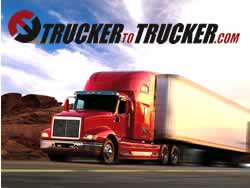According to UnitedJustice.com, highway deaths make up 94% of transportation deaths. More than 100 people die in transportation accidents every day in the United States. Local transportation safety plans and guidelines are intended to prevent unnecessary accidents and save lives. Identifying trends is key to eliminating as many accidents as possible and promoting transportation safety for everyone on the road. If you’re hoping to improve transportation safety issues in your area, take into consideration traffic signals, emergency response and traffic flow, which are are all important safety issues for every type of vehicle on the road.
Related Searches:
Focus on roads that have a history of accidents. Areas that are known for congestion can be made better by geometric improvements or new signals. Road safety audits are examinations carried out by a team of people in order to determine potential safety issues on roads and at intersections.
Educate your local townspeople about crashes involving deer. According to Rutgers, drivers should understand that deer/vehicle collisions happen most often during the fall season at both dawn and dusk, when visibility is low. If you spot a deer in the road or on the side of the road, slow down but don’t veer to one side. Let the deer pass and be forewarned that other deer may follow.
Finance the safety programs. Without financial backing, transportation safety programs cannot be established and safety issues won’t change or improve. Funding can come from local, state and federal sources, as well as local transportation agencies. Fire departments and rescue departments may be willing to contribute money for this cause.
Encourage drivers not to use their cell phone while driving. Whether dialing a number, texting or being involved in a conversation, drivers who use their cell phones run the risk of being distracted and having an accident. Drivers can use a headset or Bluetooth device if they need to talk on the phone while driving. However, according to PacificTel.com, hands-free devices are still not as safe as simply not using a phone while behind the wheel.
Promote different modes of transportation, such as walking or cycling. Less people in vehicles on the road means less congestion and accidents. The amount of greenhouse gases being emitted would also be reduced.
Increase safety at crosswalks to prevent pedestrian accidents. Pedestrians who get into accidents with motor vehicles must be protected under transportation safety initiatives as well. Providing crossing guards at crosswalks during heavy traffic times would improve safety. Also, installing timers at crosswalks that designate 30 seconds for pedestrians to cross the street would help to ensure that motorists are stopped at the intersection.


 Used trucks once sold by running ads in newspapers and magazines, posting them on a public bulletin board and by word of mouth. Some people still use these methods even though they are not as effective as the Internet. The web has continued to grow attracting more and more people of all age’s everyday. Internet advertising reaches more people than any other media outlet. Online ads allow millions of people worldwide to see the product resulting in more sales and for buyers it allows them to locate better deals. It is a win situation for everyone.
Used trucks once sold by running ads in newspapers and magazines, posting them on a public bulletin board and by word of mouth. Some people still use these methods even though they are not as effective as the Internet. The web has continued to grow attracting more and more people of all age’s everyday. Internet advertising reaches more people than any other media outlet. Online ads allow millions of people worldwide to see the product resulting in more sales and for buyers it allows them to locate better deals. It is a win situation for everyone. Written text is as important as photos. List all the trucks specifications as if you were the buyer. Using this method to list your specifications and features makes it more likely that your listing will be complete. List any special or outstanding features that would attract buyers. If it is possible list the maintenance the truck has received. A detailed maintenance schedule attracts buyers because a well-maintained truck indicates the past owner has taken good care of it leaving less for the buyer to perform. Strong descriptions and pictures increase the click rate by 85 percent.
Written text is as important as photos. List all the trucks specifications as if you were the buyer. Using this method to list your specifications and features makes it more likely that your listing will be complete. List any special or outstanding features that would attract buyers. If it is possible list the maintenance the truck has received. A detailed maintenance schedule attracts buyers because a well-maintained truck indicates the past owner has taken good care of it leaving less for the buyer to perform. Strong descriptions and pictures increase the click rate by 85 percent.






